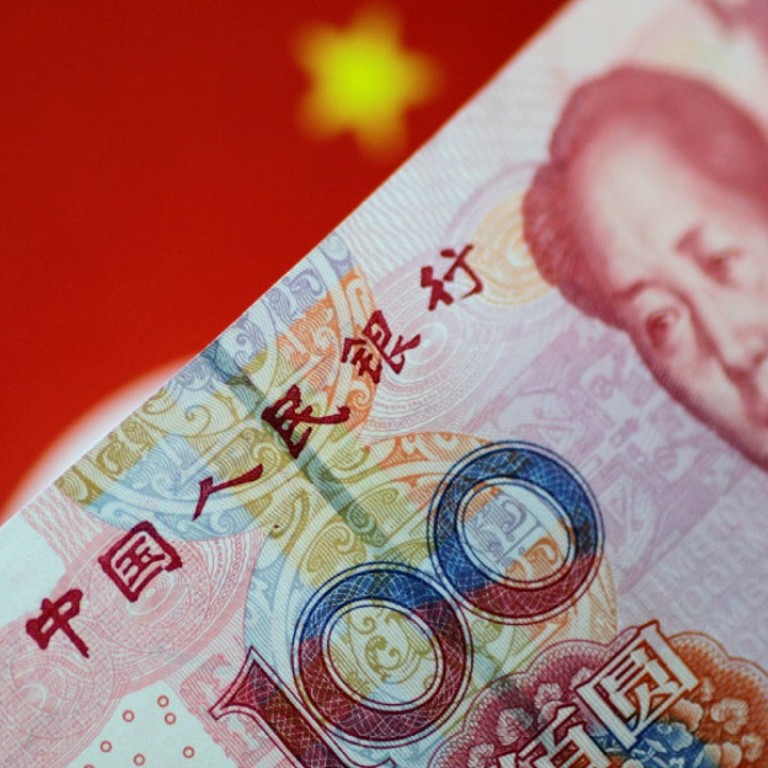
China banking on home-grown system to keep financial crises at bay
Macro prudential assessment system created after the 2008 global financial crisis, which conventional monetary policy frameworks failed to prevent
The People’s Bank of China is pinning its hopes of fending off a financial crisis on a home-grown macro risk assessment system, according to the youngest of China’s five central bank deputy governors.
The “macro prudential assessment” (MPA) system is the result of Beijing’s efforts to learn from the 2008 global financial crisis after conventional monetary policy frameworks failed to prevent it.
Speaking at the annual Caixin conference on Thursday, 47-year-old Yin Yong, who holds a Master of Public Administration from Harvard University, said the reason traditional regulatory systems failed was because they were “limited and fragmented”.
In contrast, “China’s MPA framework is designed to prevent systematic risks,” he said, adding that it was “set to enhance the stability of the financial system and control excess prosperity”.
The central bank is struggling to pursue the sometimes conflicting objectives of maintaining growth and controlling borrowing. After the yield of China’s 10-year government bonds exceeded 4 per cent earlier this week, a sign of stress in the money market, the PBOC is pumping 810 billion yuan into the market, the largest weekly liquidity support since January, Reuters reported.
After the financial crisis, the PBOC enhanced its coordination with other major central banks, but has increasingly highlighted the uniqueness of China’s circumstances and opted to use its own tools.
Last year, for instance, PBOC governor Zhou Xiaochuan publicly questioned the effectiveness of “forward guidance” – by which central banks communicate their monetary policy plans – even though it was embraced by his counterparts at the US Federal Reserve, European Central Bank and Bank of England.
The MPA framework was endorsed last month by President Xi Jinping as one of the “two pillars” of China’s central banking system, with the other being the conventional monetary policy system.
One of the three main functions of the MPA is regulating individuals banks. According to the PBOC, the better a bank’s governance and the lower its risk factor, the more it is encouraged to lend. In contrast, lenders with the opposite profile are required to maintain a much higher reserve with the central bank.
The MPA system is also concerned with cross-border money flows, and place-specific mortgage and property credit policies.
Yin, who is seen as a rising star in China’s financial regulatory arena and was in charge of managing China’s foreign exchange reserves during the global financial crisis, said, however, that the framework was still “in need of improvement” and only time would tell it was good enough to prevent a fully fledged financial crisis.
Yin was promoted to deputy central bank governor in December after being made an assistant governor in 2015.
He previously spent eight years as head of the investment centre of the State Administration of Foreign Exchange, where he managed the country’s foreign exchange reserves, which currently stand at about US$3 trillion, from a peak of about US$4 trillion in mid-2014.
Yin joined the central bank in 1996 after completing a PhD at Tsinghua University, according to his biography on the PBOC’s website.
In a speech he made in 2014, he recalled a day in 2003 when China’s then Premier Zhu Rongji visited the investment centre and referred to the then 33-year-old Yin and his colleagues “babies” because of their youth.
Introduced last year after a stock market rout in the summer of 2015 wiped trillions of yuan off China’s share values and a mistimed forex reform triggered massive capital outflows, the MPA gained in prominence after Xi made preventing financial risk a policy priority.
The MPA was mentioned last week during the inaugural meeting of the Financial Stability and Development Committee, chaired by vice-premier Ma Kai, though exactly how it will be used has yet to be decided.
“The coordination between macro prudential assessment, monetary and fiscal policies is still being explored,” Yin said.

